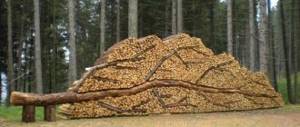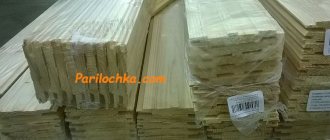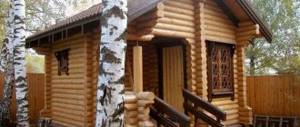Types of doors according to manufacturing method
Glass oven door made of heat-resistant material
Various materials are used to make oven doors: metal, cast iron, glass. Cast iron and metal structures have been used for a long time, heat-resistant glass is a new material.
Glass
Glass oven doors have been in use for the last 10 years. Glass sheets are manufactured in several versions:
- Single layer. They have a thickness of 3 mm and are used when burning wood, peat, and plant waste in a firebox.
- Multilayer, 4 mm thick. Installed during the combustion of coal with a high combustion temperature.
Transparent, frosted or embossed glass is installed in the stove doors. Glass doors make it possible to observe the flame. For transparency, you need to wipe the surface with soot-removing products, or buy a material with a coating that prevents its formation.
Metal
Homemade metal door
Ordinary ferrous metal will oxidize when exposed to moisture, this is especially true in a bathhouse. To prevent the formation of rust, metal doors are coated with heat-resistant paint.
The best, although more expensive, option is stainless steel. The product is light in weight and easily attached to a brick structure. The long service life pays off the high purchase price. The modern design makes this stove element a decoration for the interior of the room.
Cast iron
Cast iron construction for firebox and ash pan
A cast iron oven door is the best choice. Has the following advantages:
- durability, service life is practically unlimited;
- high heat resistance;
- wear resistance;
- versatility of use.
Cast iron products are used in furnaces that burn coal. The high temperature (up to 8000C) that occurs during combustion does not damage the structure. For the demanding consumer, a complex design of stove doors is developed and combined with glass inserts.
When casting cast iron products for the stove, complex technologies are used; decorating them with ornaments or decorative details complicates the process, making it expensive. Such models are not intended for mass use, but if you wish, you can always find a craftsman to make them.
Manufacturing methods
There are several ways to make a furnace door for a stove with your own hands, all of which will differ depending on the material. More about this.
Glass
A DIY glass oven door is an excellent option not only because of its functionality, but also its beauty. After all, you can watch the flame, which will be a good interior solution.
For a stove that serves to heat a room, fire-resistant glass should be preferred. It is distinguished by its strength and durability.
Main characteristics for choosing glass for the door:
- Resistance to high temperatures. If the glass is not heat-resistant enough, the door may be damaged: crack or even fall apart.
- Strength. It is necessary to choose a material that has a thickness of at least four millimeters. Glass that is thinner may not withstand shock or temperature.
- Durability. Maximum temperature fluctuations must be taken into account. Material with a long service life will last you much longer.
In addition to glass, to make the door you will need an angle grinder, welding, bolts, canopies, and metal corners to make the frame.
Making this product does not require much time and effort:
Example drawing
- First you need to make the sides of the frame from the corners in accordance with the required measurements. After checking all the dimensions, you can weld the parts.
- Bolts are used to secure the glass to the frame. They are not screwed in very tightly around the perimeter (when heated, the glass expands).
- It is necessary to make an identical frame, which is used as a lintel for the door.
- The first frame with glass is connected to the second using canopies.
- The outside of the frame is treated with heat-resistant glue, but to do this, you first need to remove the glass, and after it has completely dried, insert it into place.
- After this you can make the handle and latch for the door.
A DIY oven door with glass will last you longer if you provide proper care and careful handling of it.
“Deaf” made of metal
Another type is a blank metal door. It acquired this name because of its completely closed surface. This model will be the most universal option: it does not require special skills in manufacturing and installation.
A do-it-yourself metal stove door should be made of heat-resistant material. The most common is steel. The steel door is strong and durable and does not require much effort in manufacturing and installation. To make it, a simple set of metalworking tools, welding and a grinder are enough. The material will be 4 corners, a steel sheet, bolts, nuts.
Making a door from metal occurs in several stages:
- Paint all metal parts of the required size with heat-resistant paint.
- Weld a frame from a corner.
- Make a rectangle smaller than the frame from a sheet of metal
- Place hinges between the frame structure and the iron sheet (so it can be opened).
- Weld the handle and latch to the door.
- Attach the structure using metal anchors or any other method convenient for you.
Cast iron
The characteristics of a cast iron door are between glass and iron. Its service life is longer than that of glass, but shorter than that of steel. It is inferior in appearance to the previously discussed options.
Making a cast iron door at home is not easy. This requires some skills in working with this material, as well as electric welding and special clothing.
Approximate dimensions for a Russian stove
Stages of making a cast iron door:
- Cast iron material requires preparation. Defects must be eliminated mechanically or manually.
- The part should be slightly heated. Remember that cast iron is a fairly brittle material. You need to work with it carefully.
- The algorithm for making a cast iron door is the same as a steel one. After marking, the material should be cut with a grinder and welded using electric welding.
- If necessary, steel studs are used for welding. After welding, the parts are covered with dry compounds (sand), which do not allow them to cool quickly.
Groups of doors in the process of laying
Fire door
The stove design includes doors for various purposes. Each element has its own role. The following doors are separated:
- furnace;
- view;
- blowers;
- cleaning
Furnace
Designed for storing fuel. The combustion door performs the following functions:
- protection of the surrounding area from fire;
- heat transfer from material burning in the firebox to the room;
- preventing sparks from flying out;
- provides combustion with oxygen.
The material is chosen based on its practicality or the desire to decorate the interior of the room. The latest fashion trend is a stove door with glass.
Podduvalnaya
It is installed on the ash chamber, through which the oven is cleaned of ash that spills into the lower compartment. The blower door provides the process with air. By opening or closing it, the flow and rate of fuel combustion are regulated.
Blower doors are made of cast iron or steel, less often glass. They can be of a simple design, or they can be made of cast iron with a relief finish or ornament. They are made in the same style as fireboxes.
Cleaning
They close the hole in the chimney wall and serve to clean it from soot and soot. This is a necessary element in the design of the stove, ensuring its proper operation. Some builders ignore their installation, but an experienced stove builder will never do without cleanout holes. Their presence simplifies stove maintenance and smoke-free operation.
View
To prevent hot air from leaving the stove after combustion of fuel, a damper is installed on the chimney. It is a frame with grooves along which a plate moves, blocking the smoke exhaust channel. The valve is placed in the brickwork of the pipe.
One type of gate valve is a view. This is a frame with a hole, sides and two covers, located inside the chimney. This double protection ensures tight blocking of heat escape. A view valve is installed on the channel wall; it is usually made of cast iron.
Cleaning
Blower View
Dimensions of the firebox and ash chamber of a traditional brick oven
Tell me the correct dimensions of the ash, combustion and bread chambers for a rustic brick stove. What is the best door size to choose?
The oven specialist answers:
The dimensions of the furnace firebox must be within these limits to ensure positive characteristics. Each deviation will negatively affect the combustion process and reduce the efficiency of the stove. These are the first rules for performing stove masonry.
ASH CHAMBER
The air flow coming from the ash chamber through the grate into the firebox should participate as much as possible in the combustion process. The amount of air not involved in combustion reduces the temperature in the firebox and, as a result, the efficiency (efficiency) of combustion. Reducing the temperature in the firebox increases the consumption of firewood during the heating of the stove to the optimal temperature. Therefore, the dimensions are as follows: depth of two bricks (140 mm), width 200-250 mm, length from door to back wall 300-350 mm. Grate 200×300 mm.
FURNACE FIREBOX
Width 250-400 mm, depth (from door to back wall) at least 700 mm, height from 800 to 1000 mm. The specified dimensions will ensure complete combustion of hydrocarbons (flammable gases), which will allow the maximum temperature to be achieved in the furnace. And this will allow you to quickly heat up the furnace array in a shorter period of time and consume less firewood.
FIRE DOOR SIZE
The width is equal to or slightly narrower than the width of the firebox. Height: 210-280 mm. The size of the hearth in the furnace of a Russian stove depends on the purpose of the stove. What and in what size dishes will be cooked. A clear understanding of the purpose of the stove (heating, cooking, shape, design, etc.) will help you make the right decision. The multifunctionality of the stove design is not obligatory, but will allow you to satisfy the interests of all family members in the process of changing age interests.
See also:
Stove heating of a country house
Brick stove in the bathhouse
How to eliminate the causes of stove smoke
More on the topic STOVES FIREPLACES
It is important to comply with fire safety rules and regulations. And eliminate 21 causes of stove smoke. Any negative manifestation during the fire is an external aspect indicating unsatisfactory performance. There are still a lot of rules and regulations that must be followed.
Any project is individual and requires a serious and responsible approach from the customer at the stage of discussion and selection. The ability to understand, hear and listen protects against ill-considered and hasty decisions.
The centuries-old experience of our ancestors has turned into wisdom, which states that you need to dance from the stove. And you can't argue with that. Everything needs to be thought through and decided before work begins.
Chernoskutov Vladimir Ivanovich, furnace master
Types depending on the stove design
The sealed door has a heat-resistant cord around the perimeter
If you need a door for the oven, you should pay attention to its design. They may be leak-proof, sealed, or sealed.
Ordinary doors
This is a regular classic model with a rotary handle that secures the door from opening. Installed in simple brick stoves in old village houses. It is not airtight. Such a design may have a mechanism that presses it tightly to the hearth.
The doors are sealed
Oven doors with glass can be sealed. To seal the gap, an insulating cord made of heat-resistant material is laid around the perimeter. A tightly closed door promotes strong combustion, a high rate of fuel combustion and rapid heating of the room. Sealed doors prevent the penetration of combustion products into the surrounding room and air pollution.
Primary requirements
Cast iron door can withstand temperatures up to 8000 degrees
The main purpose of the stove door is to ensure fire safety of the home. It prevents flames and sparks from escaping, coals falling out of the fireplace, protects the room from smoke, and speeds up the process of ignition and combustion of fuel. The door material is selected depending on the heating oil used.
The glass must be at least 4 mm thick; it can withstand temperatures up to 6000C. Used for stoves and fireplaces heated with wood. In this case, metal doors are also used. When burning coal, coke or mixed fuel in a furnace, cast iron doors must be installed; temperatures up to 8000C are permissible for them.
How to make a door with your own hands
The first step is to measure the dimensions of the door - the height and width of the stove opening in which it will be installed. To do this, use a tape measure and a marker. If you want to make an arched door, determine the height in the center and two side dimensions. It is necessary to make a drawing on paper to make it easier to manufacture the product.
First, a metal frame is made from corners to fit the size of the stove opening. The door may have a fireproof glass insert, or it may be closed with a sheet of metal. The glass is attached to the frame with bolts; they are not clamped too tightly so as not to interfere with expansion when heated.
The simplest door is a solid metal one. A metal plate is welded to the frame, which tightly closes the hole.
Cast iron doors are difficult to make, so this is not done at home.
A handle and curtains are welded to the structure and painted with heat-resistant paint. Install the door using bolts or anchors.
Material of manufacture
Despite the abundance of modern fireproof materials, doors for fireboxes are made of iron, cast iron or special grades of glass. In ancient times, ceramics were used to make all the structural elements of fireplaces. Cast iron and metal alloys began to be used for these purposes later, several centuries ago; Heat-resistant glass is a relatively new representative in this series, gaining popularity at an accelerated pace.
Cast iron
Cast iron products for stoves have maximum durability, which exceeds the service life of products made from other materials. The alloy is characterized by heat-resistant properties, reliability, and wear resistance.
Cast iron doors can be safely installed on any firebox, even those in which it is planned to burn coal or coke; high combustion temperatures are not dangerous for them.
Nowadays, many consumers are not very happy with the design of cast iron stove doors; It is difficult to cast original products from this alloy, and the population wants to see not ordinary, but interesting interior details in their homes. The situation is somewhat brightened up by the presence of various models consisting of one or two doors. Cast iron doors with a glass insert in the center look original, but the production of such models is not yet widespread, and they cost noticeably more than regular products.
On a note! It is important to take into account that the installation of cast iron products on the stove must be done using reliable fasteners, because the mass of the alloy is large and the load on the fastening elements will be significant.
Steel
Doors made of stainless steel alloys are in great demand, especially for installation on stoves located in an atmosphere of humid air, for example in a bathhouse.
Without compromising the integrity, the brick of the furnace walls can withstand the wet environment, and the iron alloy, when in contact with water vapor, can begin to oxidize and collapse ahead of schedule. Therefore, to ensure durability, despite the higher price, the doors are made of stainless steel.
Such products are not very heavy, they can be easily inserted, securely fastened, and replaced if necessary; There are no increased requirements for fastening structures.
To ensure durability, oven doors made from conventional iron alloys, which are also commercially available, are periodically coated with heat-resistant paints.
Glass
Glass doors for ovens are the latest word in technology, although heat-resistant glass has been known for a long time. They were used in chemical and metallurgical industries, and were installed in some technical devices and equipment, for example, in muffles and thermostats.
These products have become available to the mass consumer in recent decades, during which time methods for producing several types of glass products resistant to high temperatures have been mastered.
There are glasses made from one or more layers that can withstand different heating temperatures. Single-layer sheets with a thickness of up to 3 mm can withstand the combustion of wood, plant waste, peat, and animal waste in the firebox. Multilayer sheets with a minimum thickness of 4 mm can be safely used to cover furnaces intended for burning coal; Thick fire-resistant glass will withstand high temperatures without cracking, deformation, or destruction.
Glass doors offered for sale may look like this:
- transparent;
- matte;
- raised.
The cost of the product depends on the manufacturing technology, which in any case exceeds the financial costs of purchasing metal products.
Glass products must be regularly cared for using conventional means, for example, “Mr. Muscle”, otherwise the main advantage - the ability to observe the hearth - will be impossible to appreciate.
If you don’t really want to wipe the glass every time before melting, you can buy special glass doors, the surface of which is coated with special substances that remove soot. Then no effort will be required from the owners; when heated, the surface will clean itself, the soot will simply burn off without leaving a trace.
When purchasing glass doors for installation in a furnace, be sure to look at the technical data sheet and clarify the permissible operating mode in order to prevent troubles during use. The range of modern products is wide, the range of permissible loads varies for each type of glass, so it is important to clarify all the characteristics in advance.











